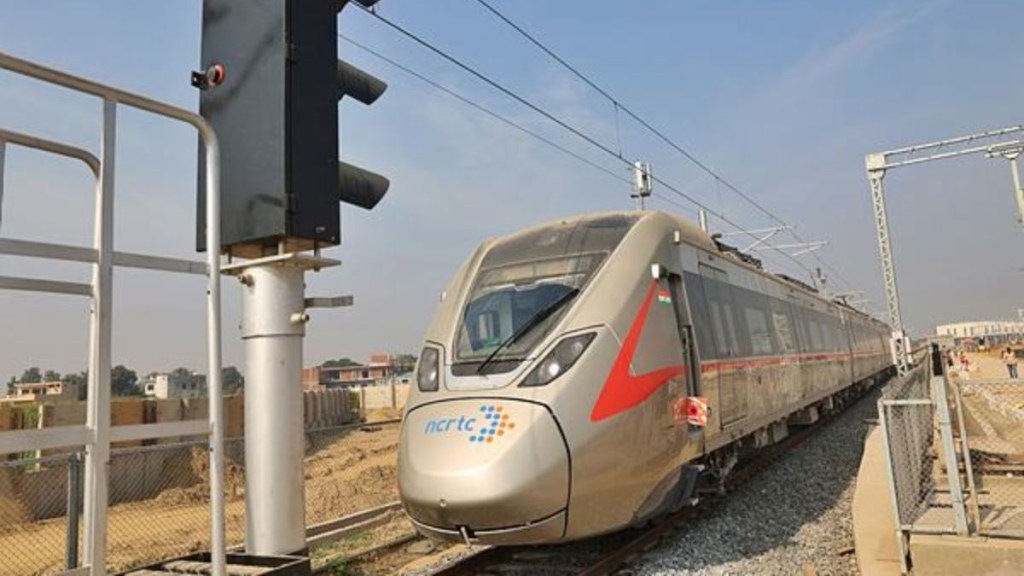The Comptroller and Auditor General (CAG) has identified irregularities in the National Capital Region Transport Corporation (NCRTC), citing undue benefits worth Rs 39 crore provided to executives. These benefits include reimbursement of vehicle expenses and payment for staff engaged at their residences for official work, The Indian Express reported.
The NCRTC is currently working on the implementation of the Regional Rapid Transit System (RRTS) in the National Capital Region. When asked for a response, an NCRTC representative stated that the issue is “currently under discussion and correspondence with the Comptroller and Auditor General (CAG).” The spokesperson further mentioned that the NCRTC has followed the standards and methodologies applied in comparable metro and rail infrastructure projects.
Key Findings of the CAG Audit
According to the draft audit, the NCRTC provided Rs 33.28 crore in additional payments for vehicle expense reimbursements from April 2020 to March 2023. Furthermore, the audit flagged Rs 5.72 crore in additional costs from April 2019 to March 2023 for hiring telephone attendants cum dak khalasis (TADK) to perform official duties at executives’ residences.
The CAG noted that these payments violated the Department of Public Enterprises (DPE) guidelines, which cap perks and allowances at 35 per cent of an executive’s basic pay. The audit also found that the payments were not based on actual expenses and, therefore, could not be classified as reimbursements.
NCRTC’s Response to CAG Allegations
In response, the NCRTC stated that it operates as a joint venture governed by its Board of Directors, and hence, the DPE guidelines do not apply to it. The corporation argued that the Managing Director, under delegated HR powers, approved the policies in question. However, the CAG dismissed this defence, pointing out that the NCRTC Board had adopted pay scales and allowances under DPE guidelines when implementing the 3rd Pay Revision in 2017.
The CAG asserted that the approval of the policies solely by the Managing Director contravened the Canons of Financial Propriety outlined in the NCRTC’s Schedule of Powers. The audit report emphasized that no authority should sanction expenditures that may directly or indirectly benefit themselves.
NCRTC’s Justification for Vehicle and TADK Payments
The NCRTC spokesperson defended the payments, stating that vehicle expenses were intended to cover official travel within the Namo Bharat RRTS corridor, which spans over 100 km across Delhi, Uttar Pradesh, Haryana, and Rajasthan. The spokesperson argued that such provisions were necessary for effective supervision and coordination in project execution, especially given the round-the-clock nature of the work.
Regarding TADK payments, the NCRTC claimed these reimbursements were in line with practices followed by the Delhi Metro Rail Corporation (DMRC) and other metro projects. The spokesperson maintained that the arrangement was cost-effective and essential for maintaining a 24×7 operational environment.
Next Steps in the Audit Process
As part of the audit procedure, the CAG has provided the NCRTC with an opportunity to respond to the draft audit findings. The final audit report, incorporating NCRTC’s comments, will be presented before both Houses of Parliament.
The NCRTC, which is co-owned by the Union government (50 per cent) and the state governments of Delhi, Haryana, Rajasthan, and Uttar Pradesh (12.5 per cent each), operates under the Ministry of Housing and Urban Affairs. Recently, Prime Minister Narendra Modi inaugurated a 13-km stretch of the Delhi-Meerut corridor, a key component of the RRTS project.
The CAG’s audit findings have raised concerns over financial propriety in the NCRTC. While the corporation asserts that its policies align with industry practices, the audit questions its compliance with established government guidelines. The outcome of the audit will determine whether corrective actions are required to address these financial discrepancies.

